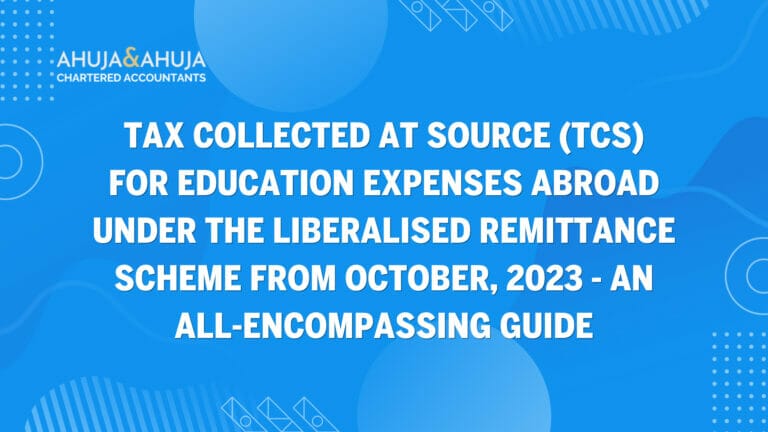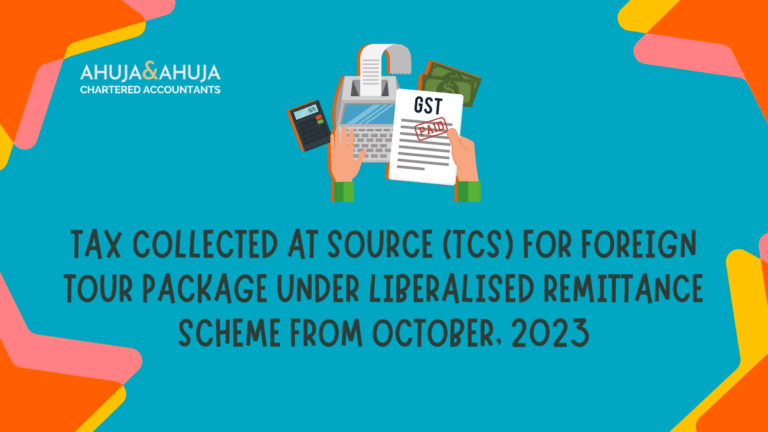Section 194R TDS on Benefits or Perquisites in respect of Business or Profession
In the ever-evolving landscape of taxation in India, Section 194R of the Income Tax Act stands out as a significant addition introduced in the Union Budget of 2022.
This section mandates the deduction of Tax Deducted at Source (TDS) on benefits or perquisites provided in relation to business or profession, whether in cash or kind.
The inclusion of this provision signifies a crucial step towards plugging tax evasion and ensuring a more comprehensive representation of income.
Gone are the days when businesses could distribute tangible or intangible perks without accounting for taxes on such distributions directly.
Section 194R targets these practices to streamline and hold accountable the flow of benefits that previously went unregulated in the tax context.
What is Section 194R?
Section 194R addresses the provision of benefits or perquisites received by an individual from a business or profession.
These benefits include both monetary and non-monetary perks exceeding the value of INR 20,000 during a financial year, on which a 10% TDS must be deducted by the person providing these benefits.
The breadth of this provision covers a vast array of benefits ranging from physical goods, services, reimbursements, to other intangible perks provided in the course of business transactions.
Understanding the Applicability of Section 194R
The applicability of Section 194R is fairly straightforward yet encompasses a range of scenarios:
- Threshold Value: The key trigger for TDS under Section 194R is the aggregate value of benefits or perquisites provided to a resident exceeding INR 20,000 in a financial year.
- Recipient: Any resident individual receiving benefits from a person engaged in business or profession.
- Type of Benefits: Includes both cash and kind, or any advantage or service provided for free or at a subsidized rate.
Why Was Section 194R Introduced?
The introduction of Section 194R can be primarily attributed to the need to curb tax evasion, a common issue where both businesses and beneficiaries could underreport real income or claim undue deductions.
For example, companies like ABC Ltd., which might provide high-value cars as incentives to dealers upon achieving sales targets, previously witnessed such perks being exempt from tax scrutiny under traditional reporting mechanisms.
This section ensures that all tangible and intangible incentives are duly accounted for within the tax framework, thus expanding the tax base and preventing revenue leakages.
This introductory section sets the stage for a deeper exploration of how TDS is deducted under Section 194R, exceptions to the rule, and the critical compliance requirements that accompany this tax provision.
Stay with us as we delve further into the practical and procedural aspects of complying with Section 194R in our subsequent sections, catered exclusively for entities and professionals across various sectors, including specialized chartered accountants in Noida and Gurgaon.
The comprehension of Section 194R is crucial for all stakeholders in the business and professional domains to effectively navigate this legislative change and uphold the integrity of their financial transactions relative to tax obligations.
TDS Under Section 194R: Who, When, and How Much?
When addressing tax-related matters, precise understanding and implementation are crucial for ensuring compliance and avoiding penalties.
Under Section 194R of the Income Tax Act, the rule is clear: a 10% tax must be deducted at source on any benefits or perquisites given by an entity to a resident, where the value of such benefits exceeds INR 20,000 in a financial year.
Roles and Responsibilities in Deducting TDS
The obligation to deduct TDS under Section 194R rests with the person providing the benefits. It is their responsibility to assess the value of the perquisites or benefits provided, calculate the applicable TDS, and deduct it from the benefit before passing it onto the recipient.
The role of calculating and deducting TDS requires meticulous attention to detail and adherence to tax laws, underscoring the significance of guidance from knowledgeable tax professionals.
Timing for TDS Deduction
The timing for the deduction of TDS under this section is at the time of providing the benefit. If the exact moment of benefit provision is ambiguous, the TDS should be deducted at the time of credit to the account of the payee or at the end of the month, whichever comes first.
Calculating the Deduction Amount
Calculating the correct amount of TDS involves understanding the value of the benefit provided.
If the benefit is given in kind or in another form where the beneficiary does not directly pay for the benefit, the provider may either add the tax amount to the cost of the benefit (grossing up the benefit) or might absorb the cost themselves.
This decision typically depends on the policy of the providing business and the terms of their engagement with the beneficiary.
When Does Section 194R Not Apply?
Understanding exceptions to any rule is as important as understanding the rule itself. Section 194R does not apply universally and it’s imperative for businesses to know when they are exempt from these TDS provisions:
- Employer-Employee Relationship: If the perks or benefits are provided within an employer-employee context, then TDS deductions are governed by Section 192, not 194R.
- Non-resident Recipients: Benefits provided to non-resident Indians are subject to provisions under Section 195, dealing with payments to non-residents.
- Non-Business Relations: If no business relationship exists between the giver and receiver, Section 194R does not apply.
- Lower Value Benefits: No TDS deduction is required if the total value of the benefit does not exceed INR 20,000 during the financial year.
- Small Business Exemption: Entities with a turnover less than INR 1 crore (business) or INR 50 lakh (professionals) are exempt from this deduction requirement.
Through understanding both the applicability and exceptions of Section 194R, entities can navigate their tax liabilities more effectively, often with the help of professionals skilled in tax matters.
How is the Value of Benefit Calculated Under Section 194R?
When dealing with benefits or perquisites under Section 194R, one of the primary tasks is accurately determining their value. This valuation is critical as it dictates the TDS amount to be deducted.
Determining the Fair Market Value
The Central Board of Direct Taxes (CBDT) suggests that the fair market value of the benefit should be taken as the basis for TDS computation.
The fair market value is essentially the price that the benefit would ordinarily fetch on the open market.
- Purchased Benefits: If the benefit is purchased by the provider, the value of the benefit is the purchase price.
- Manufacturer Provided: If the benefit is provided by a manufacturer or someone who is in the business of selling such items, the price charged to customers for such an item would be considered the value of the benefit.
Each scenario dictates slightly different approaches, ensuring that the value assessed is fair and reflective of the actual benefit conferred.
Compliance Requirements for TDS under Section 194R
TDS Deduction and Deposits
Once the TDS is calculated based on the fair market value, the next compliance requirement is the actual deduction and deposit of the TDS. Businesses must ensure they:
- Deduct the TDS amount before handing over the benefit to the beneficiary.
- Deposit the deducted TDS to the government treasury within the specified timeframe as per the Income Tax guidelines.
For many businesses, managing these tasks requires meticulous planning and operations, which can be efficiently handled by experienced tax professionals, possibly facilitated by entities providing comprehensive outsourcing services.
Documentation and Reporting
The entities providing the benefits are also mandated to file quarterly TDS returns using Form 26Q. This helps in maintaining transparency and proper records of all TDS deductions made under Section 194R.
Additionally, every quarter, the provider must issue a TDS certificate to the recipient in Form 16A, accessible through the provider’s TRACES account.
Recipients can verify these details in their Form 26AS. Keeping diligent records is crucial and assists both parties in the smooth handling of their tax obligations.
FAQs
Is Section 194R applicable on gifts received during personal occasions like marriages or festivals?
No, Section 194R is specifically designed to handle benefits or perks arising out of business or professional contexts. Personal gifts received at weddings or festivals are not covered under this section.
Does Section 194R apply to benefits received in the form of capital assets?
Yes, the provision of Section 194R applies irrespective of whether the benefit is provided as a capital asset or not. As long as the benefit arises out of business or professional contexts and meets the other criteria, TDS must be deducted.
Is it necessary for deductors to provide TDS certificates?
Yes, as per the IRS regulations, it is mandatory for the deductor to provide a TDS certificate to the recipient, facilitating transparency and ease in managing tax records.
Conclusion
Section 194R of the Income Tax Act marks a significant shift in how business-related benefits and perquisites are treated under tax law.
By understanding and implementing the guidelines detailed in this section, businesses and professionals can ensure compliance, thereby contributing to a more transparent and efficient tax system.
For further assistance or detailed consultation, consider reaching out to expert chartered accountants.
This comprehensive overview provides a clear pathway for understanding and dealing with the intricacies of Section 194R.
Whether you are a business owner, a professional, or a tax consultant, adhering to these guidelines is essential for ensuring compliance and optimizing your tax responsibilities effectively.
Disclaimer
The materials provided herein are solely for educational and informational purposes. No attorney/professional-client relationship is created when you access or use the site or the materials. The information presented on this site does not constitute legal or professional advice and should not be relied upon for such purposes or used as a substitute for professional or legal advice.





